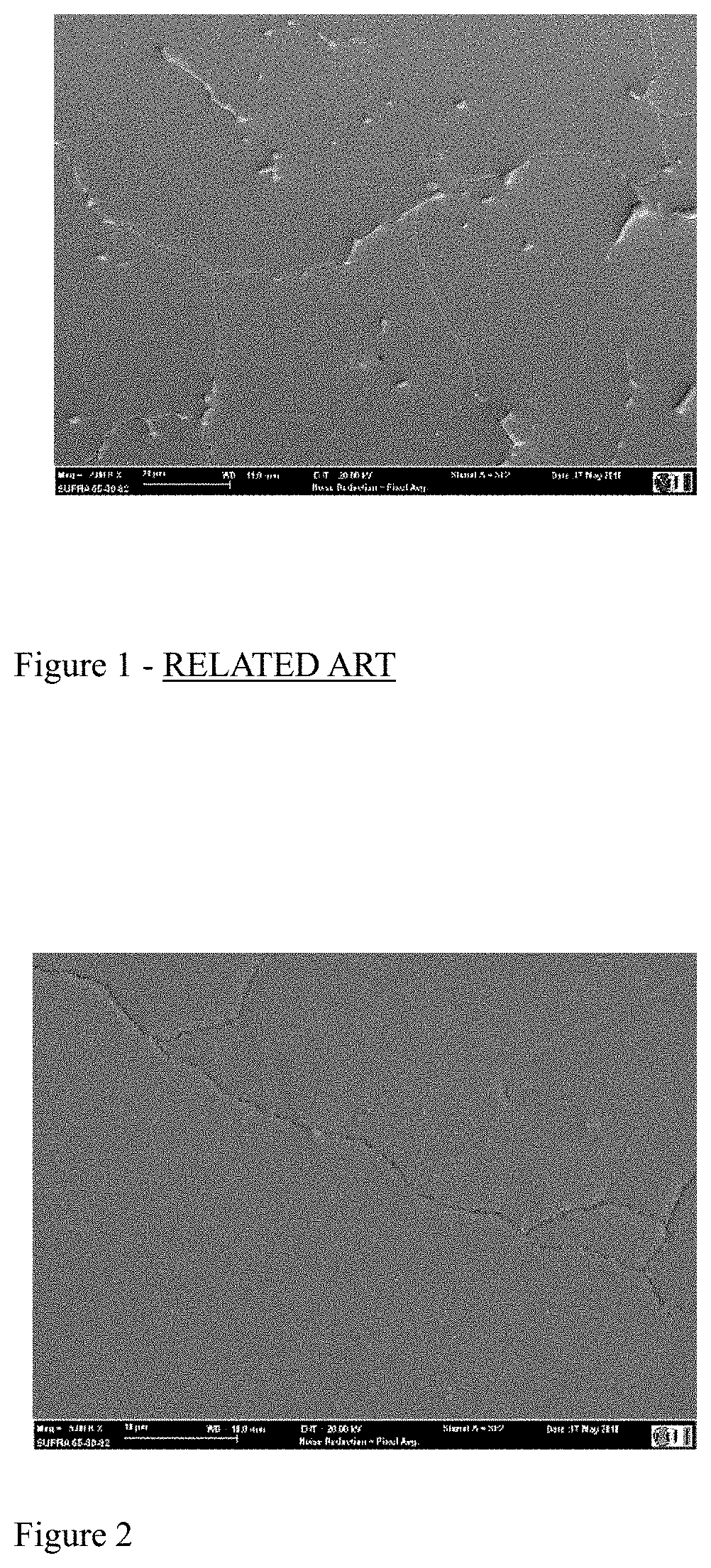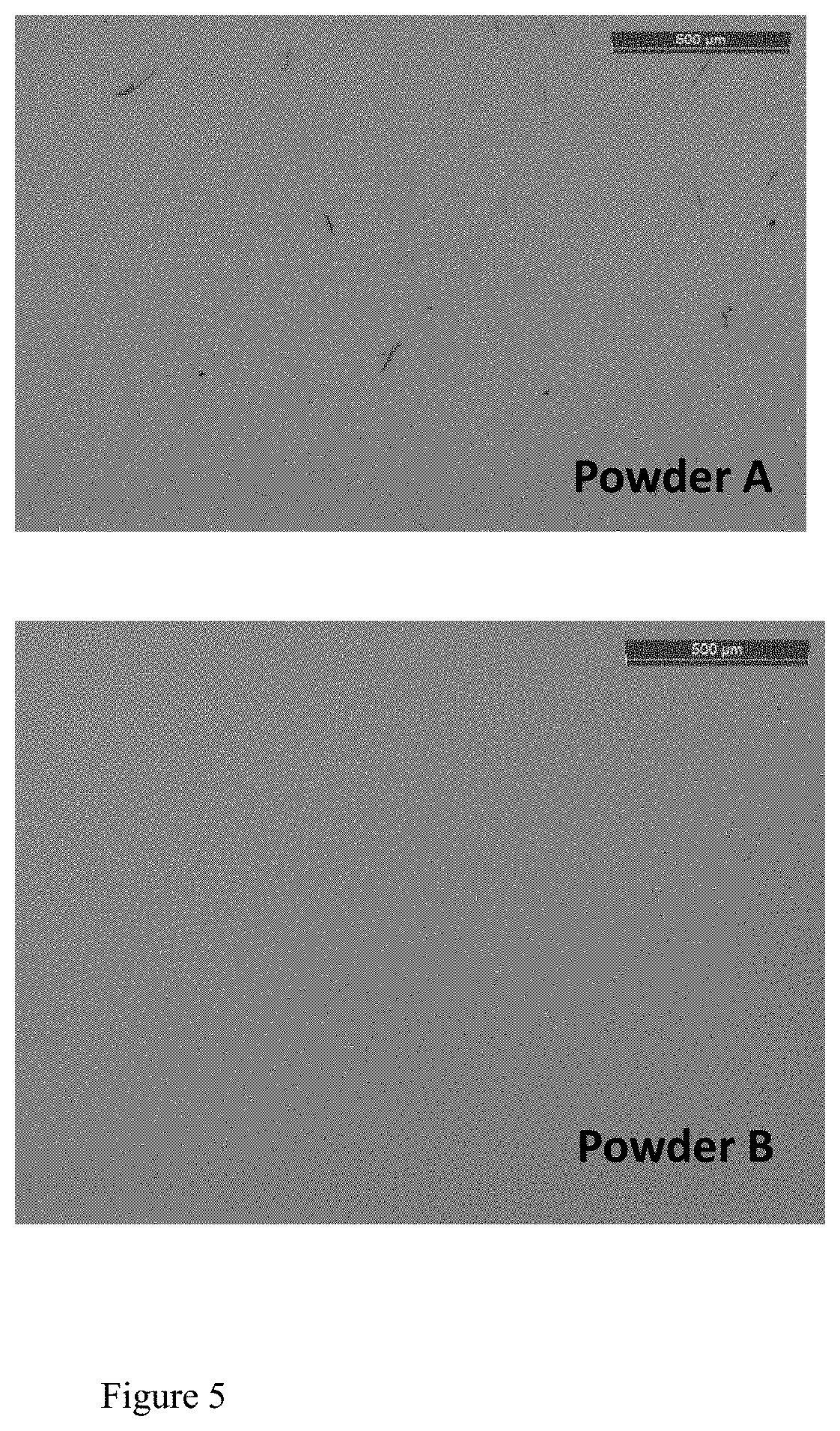Method for the additive production of an article
a three-dimensional, additive technology, applied in the direction of manufacturing tools, turbines, mechanical equipment, etc., can solve the problems of difficult formation in the additive production process, varied difficulties in additive manufacturing, and subject to crack formation, etc., to achieve the production of very complex metal articles in relatively short time, and achieve the effect of substantial welding
- Summary
- Abstract
- Description
- Claims
- Application Information
AI Technical Summary
Benefits of technology
Problems solved by technology
Method used
Image
Examples
example
[0054]The AM alloy, whose mechanical characteristics and microstructure are reported in this document, was obtained by direct metal laser melting (DMLM), wherein the power source had an energy power of about 280 W and a scanrate of 2000 mm / sec.
[0055]The power source scan spacing was preferably arranged in order to provide substantial overlapping of adjacent scan lines.
[0056]One suitable powder used for the method for the additive manufacturing (AM) according to the present disclosure (supplier: General Electric Company) has a weight composition with respect to the total weight of the powder, of about 22.4% chromium, about 18.6% cobalt, about 2.0% tungsten, about 1.3% niobium, about 2.3% titanium, about 1.7% aluminum, about 0.02% tantalum, about 0.06% carbon and the remaining to 100% is nickel and inevitable impurities.
[0057]The IC material (supplier General Electric Company) used in testing via conventional investment casting had the following chemical composition: about 22.4% chrom...
PUM
| Property | Measurement | Unit |
|---|---|---|
| power | aaaaa | aaaaa |
| power | aaaaa | aaaaa |
| power | aaaaa | aaaaa |
Abstract
Description
Claims
Application Information
 Login to View More
Login to View More - R&D
- Intellectual Property
- Life Sciences
- Materials
- Tech Scout
- Unparalleled Data Quality
- Higher Quality Content
- 60% Fewer Hallucinations
Browse by: Latest US Patents, China's latest patents, Technical Efficacy Thesaurus, Application Domain, Technology Topic, Popular Technical Reports.
© 2025 PatSnap. All rights reserved.Legal|Privacy policy|Modern Slavery Act Transparency Statement|Sitemap|About US| Contact US: help@patsnap.com



